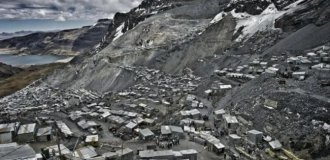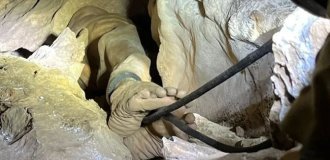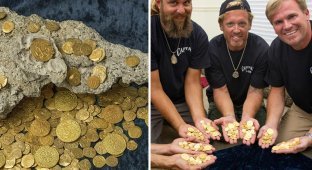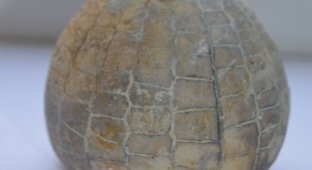Gold of the distant hills: the mystery of the Lost Dutchman mine (10 photos)
The Wild West was so named absolutely correctly. The blurred borders became a lawless territory where a brave daredevil could make a fortune or lose his life. In a certain sense, there were dragons here. And where there are dragons, there are treasures that they must protect. 
One of these legendary treasures was the Lost Dutchman Mine, a gold mine believed to be located in the Superstition Mountains east of Phoenix, Arizona. Some say that the mine was discovered by a German named Jacob Waltz (Dutch is a common abbreviation for Deutsche in the United States), others claim that soldiers found the gold, and still others insist that it is Apache gold. 
Superstition Mountains, Arizona
Perhaps none of these stories are true. Or maybe all three are true. After Waltz's death in 1891, numerous attempts were made to locate the mine and the gold it was said to contain.
But none of them were successful. Is there really a lost gold mine hidden in the mountains of Arizona, patiently waiting to be found?
Lost Dutchman Mine 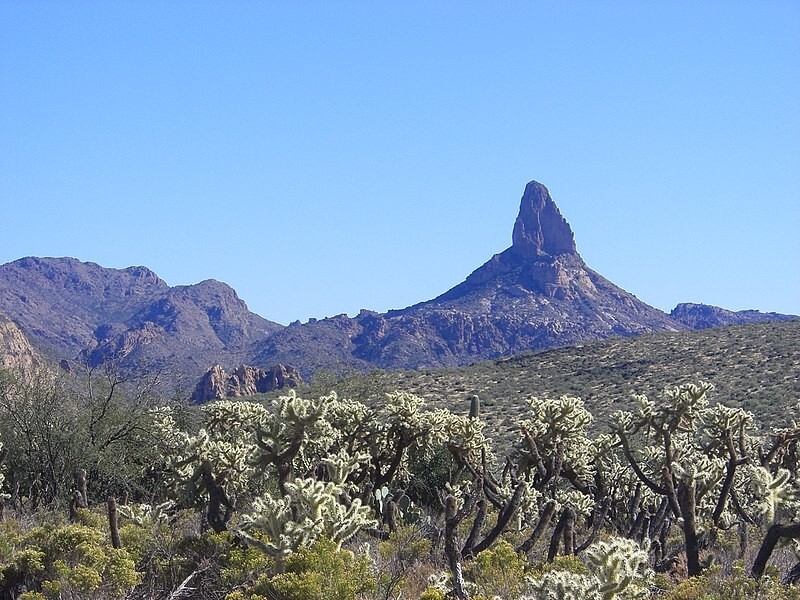
In many versions of the story, the Weaver's Needle is an important landmark for finding the lost mine
Among all the stories about the mine, the most common are the following: the mine was originally a cache of local Apache Native Americans who received it from a prospector named Miguel Peralta, who discovered gold back in the 1850s.
Later, a doctor (possibly from the US Army) treats a wounded Apache, who, thanks to the doctor's efforts, recovers from his wounds.
As a reward, the doctor is blindfolded and taken to a mine, which he says is full of gold. Nothing is known about Aesculapius except his name: Doctor Thorne. Later, two Germans living in the area come to the aid of another member of the Peralta family. And as a reward, they are told the location of the mine. These two men are named Jacob Waltz and Jacob Weiser and are often considered to be the same person with two different versions of his name. Weiser subsequently disappears from the narrative. Jacob Waltz allegedly made a confession on his deathbed and even drew a map that could help locate the mine. 
Photo of Jacob Waltz after his arrival in New York
According to this story, Waltz was obsessed with finding gold, but found nothing. Even the local Apaches did not help. However, he discovered an active mine with three Mexican workers.
Waltz decided that the mine's wealth should belong to him. Attacked a Mexican camp, killing three people. Then, in order to keep his discovery secret, the German disguised the entrance to the mine and did not approach it for more than two years.
A few years later, Jacob returned to this area with his girlfriend Julia Thomas. When Jacob grew old and realized that he could not work on his own, he decided to tell Julia about the hiding place.
Julia introduced Jacob to a man named Dick Holmes. Dick Holmes was a man who knew the Superstition Mountains well, and an experienced miner. 
Still from the film "Winnetu - Son of Inchu-Chun" 1964
Having received instructions, Dick Holmes went in search of the mine. But I simply got lost in the area. Later, Dick Holmes' son also tried to find a gold mine. A worthy incentive for him was a box of pure gold, which Waltz gave to his father.
Dick Holmes also described a box left by Waltz, which contained 23 kilograms of pure gold. How could Jacob have stumbled upon this wealth if the story about the mine wasn't true?
The last story is related to the discovery of the mine. Some say that American soldiers in the area also discovered it, but were transferred or killed before they could return and dig for the gold.
Tricks with stories 
While the above may seem like compelling evidence for the existence of such a mine in the Superstition Mountains, there are problems with these stories. Almost everything in them is rumors and gossip, and there is no actual evidence of her existence.
There is no record of Dr. Thorne, and although Jacob Waltz existed, there is no record of his partner. The soldiers don't even have names, and this story cannot be verified.
The map that Waltz drew and the solid gold box have not survived. Accordingly, many doubt whether they even existed. Jacob's deathbed testimony, which begins the story, further alienates the treasure hunters from the truth, since after Jacob's death there was no one left to help who had actually ever seen the mine. 
Everyone needs gold
Other aspects of these stories indicate that they are not true. Local legends often feature a man named Peralta. Named most likely in honor of Pedro de Peralta, the Spanish governor of New Mexico in the 17th century. But there's a bigger problem than all of these combined: the Superstition Mountains are simply not suitable for gold deposits.
The mountains were formed from igneous rocks such as granite, formed from cooling lava and magma and are extremely strong. They are absolutely not suitable for gold mines. Accordingly, gold cannot originate here naturally. Rather, the Apache mine, if such a thing exists, must have been a cache. Will he ever be found?
It now seems unlikely that the mine will ever be found. All the evidence comes from far-fetched, unrelated stories about gold in the hills, told at a time when many believed they could become rich by magic. 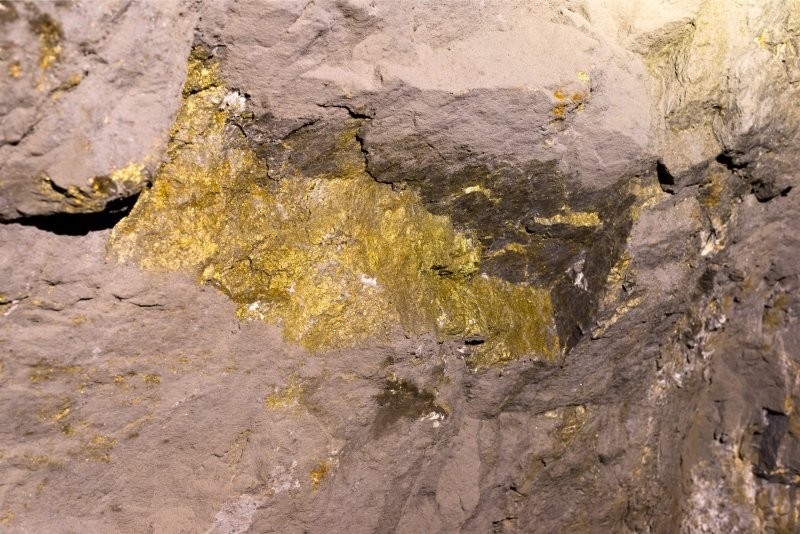
Goldmine
There is no hard evidence of the existence of the mine. But this does not stop treasure hunters. And those who believe can point to some strange aspects of the story that suggest it may be true.
First, Jacob Waltz appears to have been a real person. Documents confirming its existence and emigration to the States date back to 1848. He moved to Arizona in the 1860s and owned a ranch on which he died in 1891.
It is known that Jacob was wealthy and had a good knowledge of the surrounding area, including outstanding natural attractions. His descriptions of routes into the mountains where the mine is located coincide with the local terrain and give this story a certain plausibility. 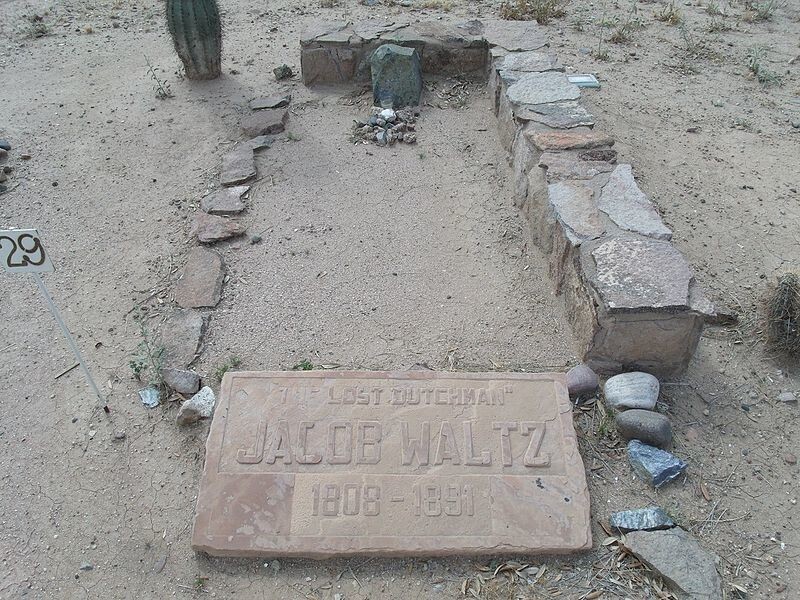
Jacob Waltz's grave
In addition, this story is not a remake: treasure hunters began looking for the mine as early as 1892, a year after Jacob’s death. If there was no dying confession, then where did these pandemoniums begin, and why did people suddenly begin to look for gold in the Superstition Mountains?
A number of explorers have made several trips to find this mine, but so far no one has seen gold. Several people have died during the expeditions, as the hills are uneven and present a very difficult surface, not suitable for long searches.
Are there really countless riches hidden in Arizona, waiting in the wings, or at least for the next lucky person to change his life? 




